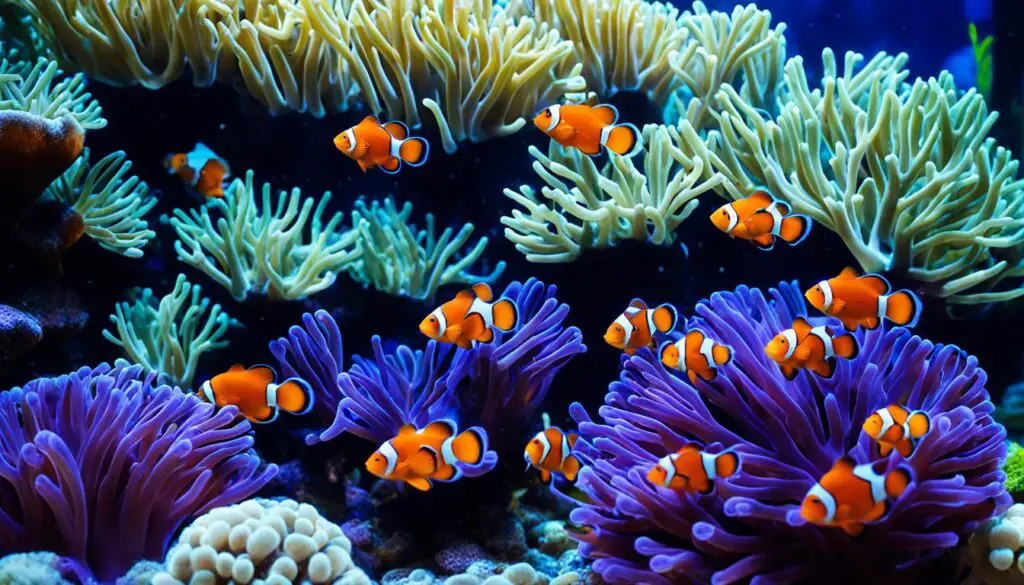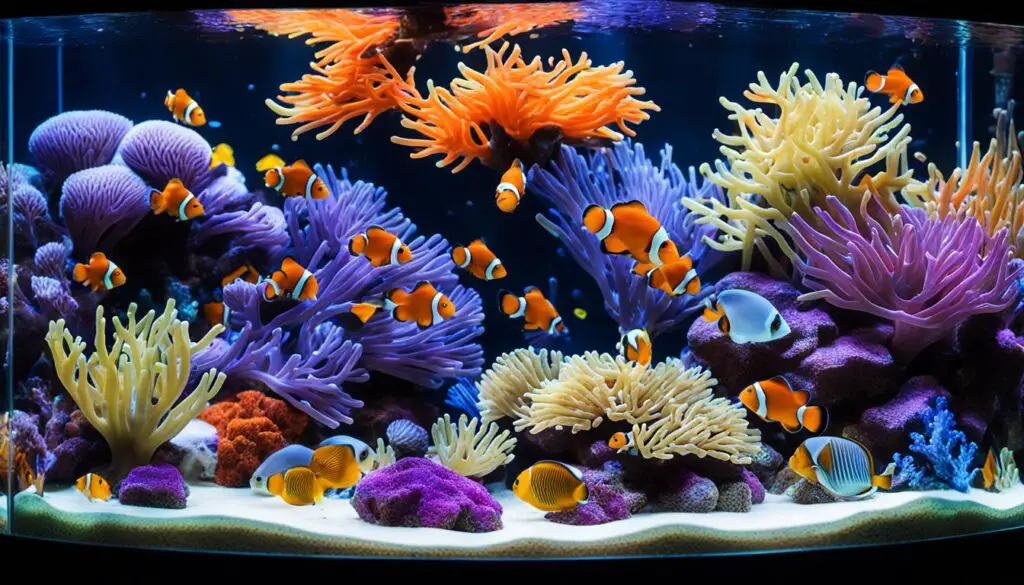Do Moon Jellies Sting

Introduction
Do Moon Jellies Sting? Marine biologists and beachgoers have long been fascinated by jellyfish. The translucent moon jelly (Aurelia aurita) is one of the most well-known and gentle jellyfish species. “Do moon jellies sting?” is a common question despite their delicate appearance. This curiosity has led to a deeper understanding of biological aquariums and their amazing species.
Nematocysts, stinging cells, are used by moon jellies and other jellyfish to defend and hunt. However, their stings are stronger than those of their more venomous relatives. Researching moon jelly stings is both fascinating and necessary to protect those who meet them in the wild. Moon jellies’ stinging cells and their effects on humans and other species are explored in this article.
Moon jellyfish, part of the jellyfish family, use nematocysts for defense and prey capture. However, their stinging mechanism distinguishes them from more powerful and dangerous species. Moon jelly stings are fascinating and useful for safeguarding people in the environment. We learn about moon jellies, their stinging cells, and their effects on humans and other species in this article.

Do moon jelly jellyfish sting?
The moon jelly is only slightly venomous. Contact can produce prickly sensations to mild burning. Pain is usually restricted to immediate area of contact.
Moon jellies use their stinging cells to catch little planktonic prey, and their tentacles lack potent toxins.
Moon jelly rarely causes painful stings or skin discomfort. Some people with sensitive skin may feel slight discomfort or a rash like a bee sting or sunburn. Moon jellies are safe to touch and are often handled in public aquariums.
Although moon jellies are safe, other jellyfish can cause painful stings.
How do you treat a moon jelly sting?
Relieve the stinging sensation by soaking the irritated area in hot water or covering it with a cold compress. You can also ease the pain by applying calamine lotion, using a mild hydrocortisone, or taking an oral antihistamine.
Treating a moon jelly sting is usually straightforward, as these jellyfish are relatively harmless to humans. If you or someone you know is stung by a moon jelly, here are some steps to follow:
1. Rinse with seawater: The first step is to rinse the affected area with seawater to remove any tentacle fragments or stinging cells that may be present. Avoid using freshwater, as it can cause the stinging cells to release more toxins.
2. Use vinegar or baking soda (optional): While the stings from moon jellies are typically mild, you can apply vinegar or a baking soda paste to the affected area to help neutralize any remaining toxins or alleviate discomfort. This step is optional, as many moon jelly stings do not require additional treatment.
3. Monitor for allergic reactions: In most cases, moon jelly stings cause only minor irritation, similar to a mild sunburn. However, it’s essential to watch for any signs of an allergic reaction, such as difficulty breathing, hives, or swelling. If these symptoms occur, seek medical attention immediately.
In general, moon jelly stings are not a cause for significant concern, and the mild discomfort they may cause can be managed with the steps mentioned above. However, it’s always wise to exercise caution when encountering jellyfish in the wild and to consult a healthcare professional if you have any doubts or concerns about the severity of the sting.
Is the sting of a moon jelly harmless to humans?
Fortunately, several of the most common jellies in the Florida Keys, such as Cassiopeas, moon jellies, and cannonball jellies, do not inflict a very powerful sting. Some people find they can handle them without feeling anything, but it’s important to be cautious, as people’s sensitivity can vary.
Yes, the sting of a moon jelly (Aurelia aurita) is considered harmless to humans. Moon jellyfish are among the least harmful jellyfish species, and their stings are generally not painful or dangerous. While they do possess stinging cells, known as nematocysts, these cells are relatively weak and are primarily used to capture small planktonic prey. Moon jellyfish lack the potent toxins found in some other jellyfish species, which can cause severe discomfort and even health risks to humans.
If a person comes into contact with a moon jelly, the typical reaction is minor skin irritation, akin to a mild bee sting or a minor sunburn. While some individuals with particularly sensitive skin might experience slight discomfort or develop a mild rash, moon jelly stings are not a significant cause for concern. They are often touched and observed by people in public aquariums without adverse effects.
However, it’s crucial to exercise caution when encountering jellyfish in the wild, as other species may deliver more painful or dangerous stings. It is advisable to avoid touching jellyfish to prevent accidental contact with their stinging cells. If a more severe reaction or an allergic response occurs, seeking medical attention is always recommended.
How long does a jelly sting last?
Most jellyfish stings improve within hours, but some stings can lead to skin irritation or rashes that last for weeks. Contact your provider if you continue to have itching at the sting site. Topical anti-inflammatory creams may be helpful. Portuguese man-of-war and sea nettle stings are rarely deadly.
The duration of a jellyfish sting’s discomfort and irritation can vary widely depending on several factors, including the jellyfish species, the individual’s sensitivity, and the specific location and severity of the sting. In the case of moon jellyfish stings, which are generally mild, the discomfort typically lasts for a relatively short period. Most individuals may experience symptoms like redness, itching, and a mild rash, which can persist for a few hours to a couple of days at most.
For stings from more venomous jellyfish species, such as the box jellyfish or Portuguese man-of-war, the symptoms can be more intense and prolonged. These stings can cause severe pain, swelling, and in some cases, more systemic reactions like nausea or muscle cramps. The duration of discomfort from such stings can range from days to a couple of weeks, with some residual effects even lasting longer.
It’s important to note that immediate and appropriate first aid can help alleviate symptoms and shorten the duration of discomfort for jellyfish stings. Applying vinegar or hot water, for instance, can help inactivating the nematocysts and mitigating pain for some species. Seeking medical attention is advisable for more severe stings, as healthcare professionals can provide appropriate treatment to manage the symptoms and aid in a quicker recovery.
Do moon jellyfish feel pain?
Can jellyfish feel pain? Jellyfish don’t feel pain in the same way that humans would. They do not possess a brain, heart, bones or a respiratory system. They are 95% water and contain only a basic network of neurons that allow them to sense their environment.
The question of whether moon jellyfish, or other similar organisms, can feel pain is a topic of ongoing scientific debate. The fundamental issue lies in the definition of pain and consciousness. Moon jellyfish and related cnidarians, which include many jellyfish species, do not possess a centralized nervous system or a brain, and their sensory and nervous structures are rudimentary compared to animals with more complex nervous systems.
Research suggests that these organisms have a basic response system to stimuli, allowing them to react to their environment. They have specialized cells called cnidocytes that contain harpoon-like structures called nematocysts, which they use for defense and capturing prey. When triggered, nematocysts release toxins. This response is more of a reflexive and automatic action rather than an indicator of experiencing pain.
Some scientists believe jellyfish and related species do not experience pain because they lack a brain and a well-developed nervous system, although the matter is still being studied and ethically debated. However, these animals’ pain perception is complex and disputed in animal cognition and welfare.
Do moon jellies have a stinging mechanism like some other jellyfish species?
When activated, these nematocysts release small, coiled threads with toxins that immobilize or catch prey and defend against attackers.
Moon jellies are among the least dangerous jellyfish to humans. Their stinging cells are weaker than those of other jellyfish species, and their toxins rarely affect people. Thus, moon jelly stings are usually light and cause skin irritation like a bee sting or sunburn.
Although moon jellyfish hurt, their bites rarely bother humans. Some jellyfish species can inflict more painful and harmful stings, so be careful while engaging with them in the wild.
Are moon jellies capable of delivering a painful sting to humans or other organisms?
Moon jellyfish (Aureilia aurita) rarely sting humans or other species. They have a modest stinging mechanism and no powerful poisons like other jellyfish. Moon jellies sting mildly and briefly, giving skin irritation like a bee sting or sunburn.
Nematocysts in their tentacles carry toxins needed to catch little planktonic food, causing these moderate stings. Stinging cells are uncomfortable but not hazardous. Moon jelly stings usually cause redness, stinging, and a moderate rash that lasts a few hours to a few days.
Note that box jellyfish and Portuguese man-of-war jellyfish can cause more painful and dangerous stings than moon jellies. It’s best to avoid handling jellyfish in the wild because different types are venomous.
What are the characteristics and effects of the stinging cells, if any, found in moon jellies?
Moon jellies have weaker nematocysts than more poisonous jellyfish, therefore their effects are minimal.
Moon jelly stings can cause redness, stinging, and a rash. Symptoms resemble a mild bee sting or sunburn. Moon jelly nematocysts emit toxins when they touch the skin, yet they don’t hurt humans. Symptoms usually last a few hours to a few days.
Moon jellyfish have weak stinging cells that don’t injure people or other species. Moon jelly stings are not severe or harmful like those of more venomous jellyfish.

Conclusion
The question “Do moon jellies sting?” reveals a captivating aspect of the natural world and the enigmatic realm of marine life. Moon jellies, with their delicate and mesmerizing appearance, represent an intriguing case where beauty meets biology, inspiring both scientific curiosity and a sense of wonder. While moon jellies do possess stinging cells or nematocysts, their stings are decidedly mild when compared to their more venomous jellyfish relatives.
These gentle jellyfish are, for the most part, harmless to humans, and their encounters in the wild typically result in minor, short-lived skin irritation, akin to the sensations of a mild bee sting or a minor sunburn. This understanding is not only a testament to the diverse and unique adaptations that exist in the marine world but also underscores the importance of coexisting with the creatures that share our planet.
As we continue to explore and appreciate the wonders of the natural world, it is essential to approach moon jellies and other marine species with respect and a sense of stewardship for their ecosystems. The question of moon jelly stings reminds us that nature, even in its most delicate forms, is intricate and deserving of protection. It is a testament to the beauty and complexity of the ocean, offering insights into a world that continues to inspire and amaze.



